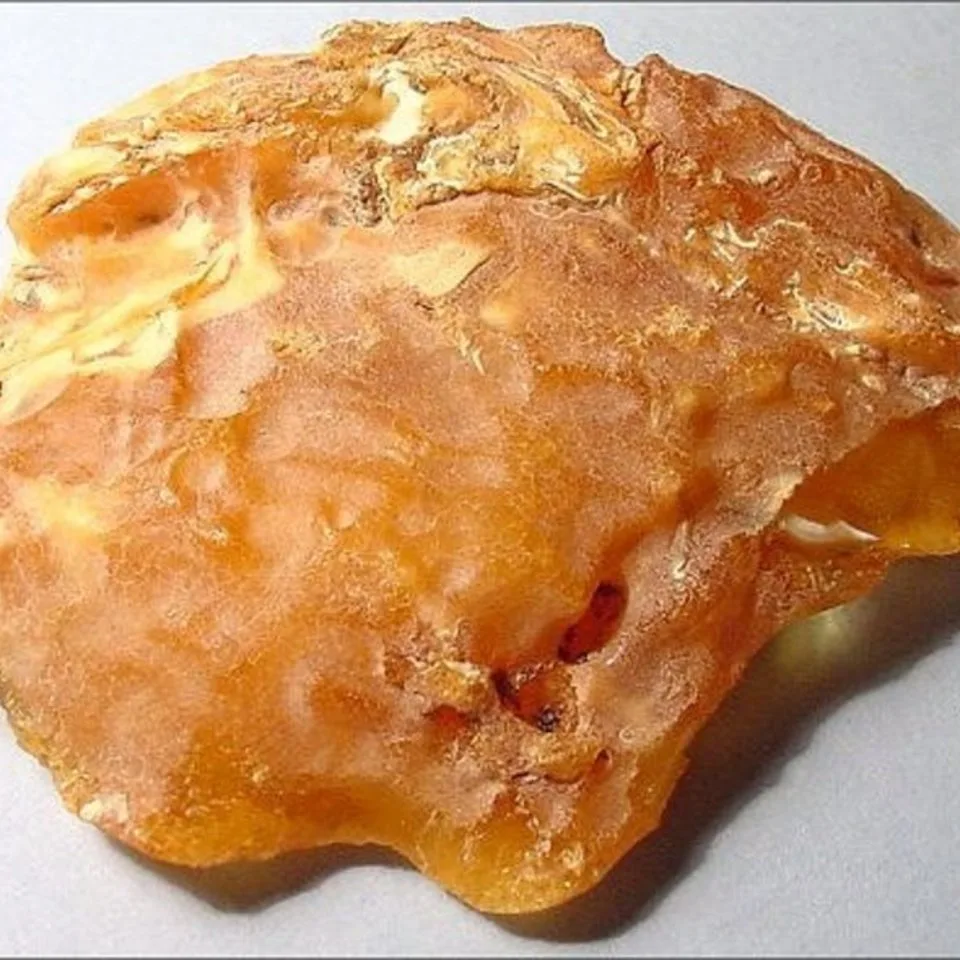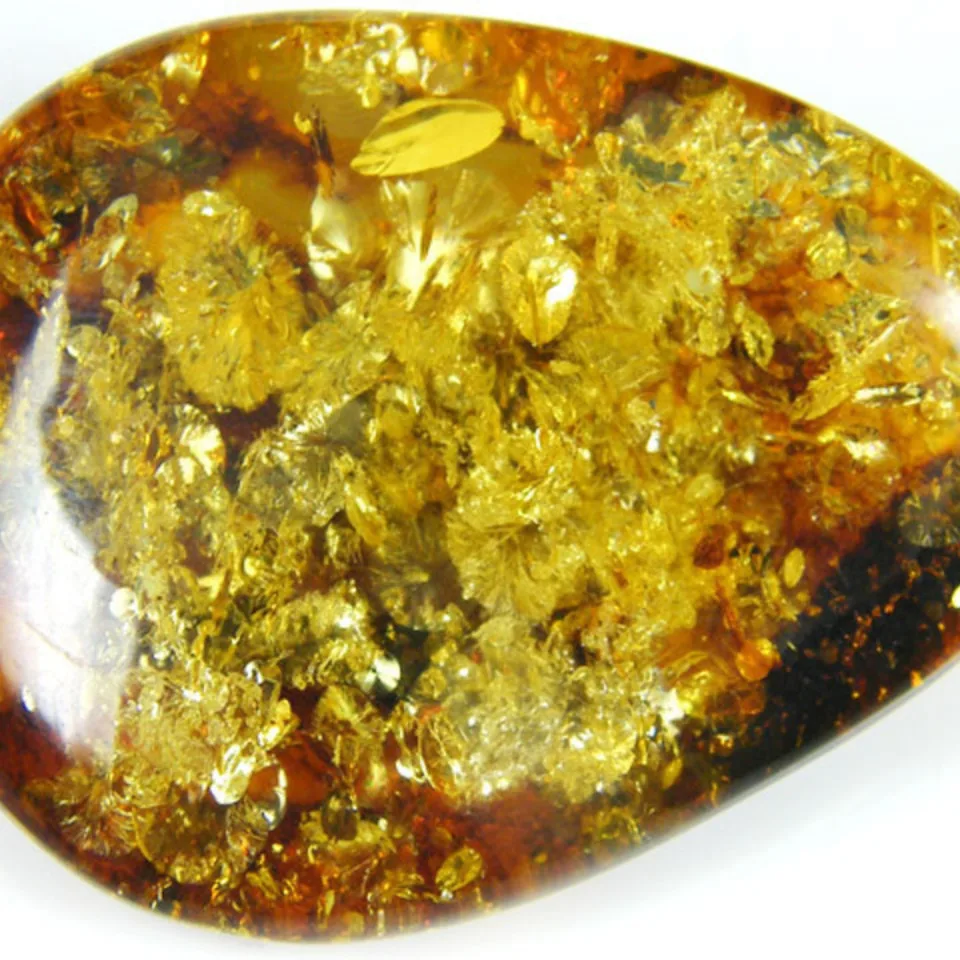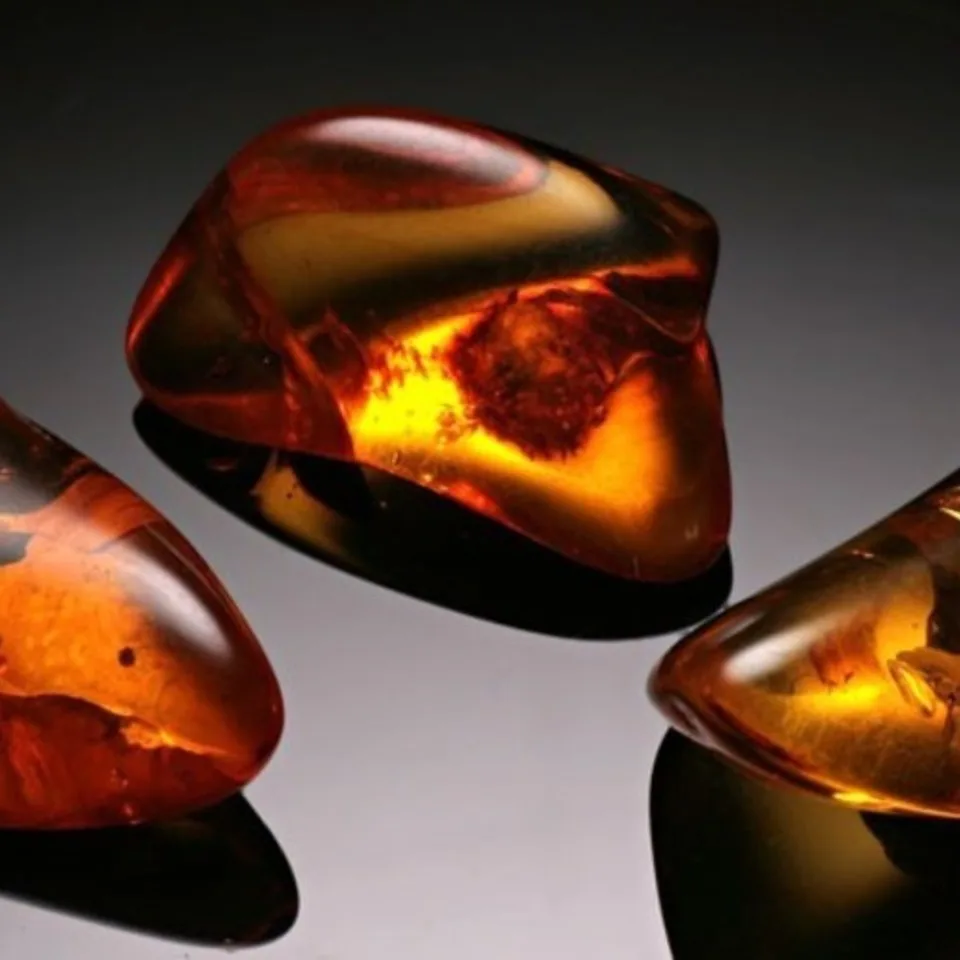Amber
Amber is fossilized tree resin (not sap), which has been appreciated for its color and natural beauty since Neolithic times. Much valued from antiquity to the present as a gemstone, amber is made into a variety of decorative objects. Amber is used as an ingredient in perfumes, as a healing agent in folk medicine, and as jewelry.
There are five classes of amber, defined on the basis of their chemical constituents. Because it originates as a soft, sticky tree resin, amber sometimes contains animal and plant material as inclusions. Amber occurring in coal seams is also called resinite, and the term ambrite is applied to that found specifically within New Zealand coal seams.
Amber occurs in a range of different colors. As well as the usual yellow-orange-brown that is associated with the color “amber”, amber itself can range from a whitish color through a pale lemon yellow, to brown and almost black. Other uncommon colors include red amber (sometimes known as “cherry amber”), green amber, and even blue amber, which is rare and highly sought after.
Yellow amber is a hard, translucent, yellow, orange, or brown fossil resin from evergreen trees. Known to the Iranians by the Pahlavi compound word kah-ruba (from kah “straw” plus rubay “attract, snatch,” referring to its electrical properties), which entered Arabic as kahraba’ or kahraba (which later became the Arabic word for electricity), it too was called amber in Europe (Old French and Middle English ambre). Found along the southern shore of the Baltic Sea, yellow amber reached the Middle East and western Europe via trade. Its coastal acquisition may have been one reason yellow amber came to be designated by the same term as ambergris. Moreover, like ambergris, the resin could be burned as an incense. The resin’s most popular use was, however, for ornamentation—easily cut and polished, it could be transformed into beautiful jewelry. Much of the most highly prized amber is transparent, in contrast to the very common cloudy amber and opaque amber. Opaque amber contains numerous minute bubbles. This kind of amber is known as “bony amber”.
Although all Dominican amber is fluorescent, the rarest Dominican amber is blue amber. It turns blue in natural sunlight and any other partially or wholly ultraviolet light source. In long-wave UV light it has a very strong reflection, almost white. Only about 100 kg (220 lb) is found per year, which makes it valuable and expensive.
Sometimes amber retains the form of drops and stalactites, just as it exuded from the ducts and receptacles of the injured trees. It is thought that, in addition to exuding onto the surface of the tree, amber resin also originally flowed into hollow cavities or cracks within trees, thereby leading to the development of large lumps of amber of irregular form.










